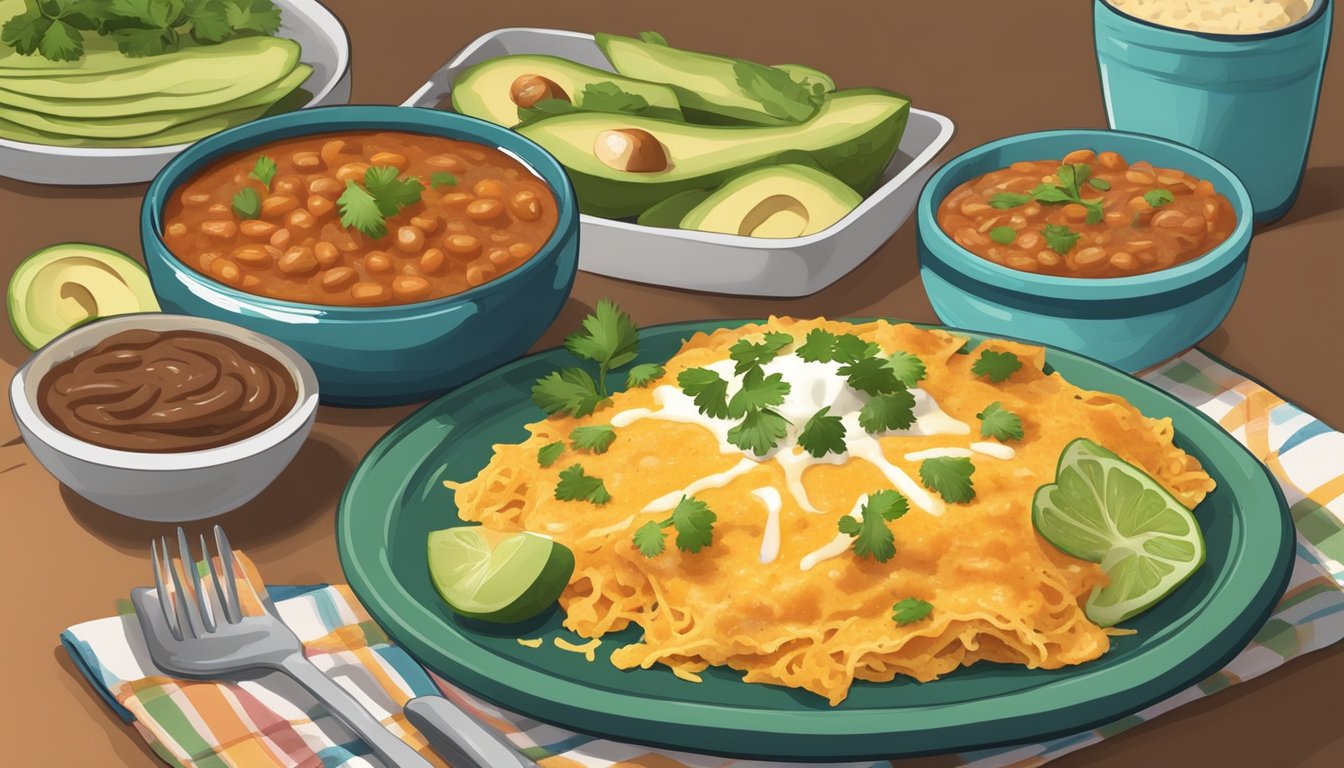Entomatadas, a beloved Mexican breakfast dish, offer a delightful start to any morning. These savory treats consist of corn tortillas dipped in a rich tomato sauce, filled with cheese or chicken, and topped with various garnishes. The best breakfast entomatadas combine perfectly fried tortillas with a smooth, tangy tomato sauce and high-quality fillings for a satisfying meal.
The key to exceptional entomatadas lies in the tomato sauce. Made from fresh, ripe tomatoes roasted to concentrate their flavors, the sauce provides a vibrant foundation for the dish. When paired with robust cheeses or tender chicken, entomatadas become a harmonious blend of textures and tastes that appeal to breakfast enthusiasts and Mexican food lovers alike.
Preparing entomatadas at home is surprisingly simple and quick. With just a few ingredients and about 20 minutes, anyone can create this authentic Mexican dish. The versatility of entomatadas also allows for customization, making them suitable for vegetarians or those seeking a hearty, protein-packed breakfast option.
History and Origin of Entomatadas

Entomatadas have deep roots in Mexican culinary tradition, evolving from simple ingredients into a beloved breakfast dish. Their history reflects the ingenuity of Mexican cooks in creating flavorful meals from readily available staples.
Traditional Mexican Roots
Entomatadas originated in central Mexico, drawing inspiration from the region’s abundant tomato crops. The dish emerged as a practical way to use leftover tortillas, transforming them into a hearty meal. Corn tortillas, a staple of Mexican cuisine for centuries, formed the base of this dish. Cooks would dip the tortillas in a savory tomato sauce, creating a satisfying and economical breakfast option.
The tomato sauce, crucial to entomatadas, showcases the Mexican affinity for tomato-based dishes. This sauce typically includes tomatoes, onions, garlic, and various spices, reflecting regional preferences and family traditions.
Evolution of the Entomatadas Recipe
Over time, entomatadas diversified in preparation and ingredients. While maintaining their core identity, cooks began experimenting with fillings. Cheese became a popular addition, with varieties like queso fresco or Oaxaca cheese enhancing the dish’s flavor and texture.
Protein additions such as shredded chicken or beef further elevated entomatadas from a simple breakfast to a more substantial meal. Regional variations emerged, with some areas incorporating local chilies or herbs into the tomato sauce. The cooking method also evolved, with some recipes calling for frying the tortillas before dipping them in sauce, adding a crispy texture to the dish.
Defining Entomatadas

Entomatadas are a traditional Mexican breakfast dish featuring corn tortillas dipped in a flavorful tomato-based sauce. They offer a tangy alternative to enchiladas while maintaining a similar structure and preparation method.
Difference Between Entomatadas and Enchiladas
Entomatadas and enchiladas share many similarities but have key distinctions. The primary difference lies in the sauce. Entomatadas use a tomato-based sauce, while enchiladas typically feature chili-based sauces.
Entomatadas have a milder, tangier flavor profile due to the tomato sauce. Enchiladas often pack more heat from various chili peppers. Both dishes use corn tortillas as a base and can be filled with cheese, meat, or vegetables.
The cooking method also differs slightly. Entomatadas are usually lightly fried before being dipped in sauce, while enchiladas are often rolled and then covered in sauce.
Key Components of Entomatadas
The foundation of entomatadas is the tomato sauce. Chefs roast fresh, ripe tomatoes to intensify their flavor before blending them into a smooth sauce. Onions and garlic are often added for depth.
Corn tortillas are essential to entomatadas. They are briefly fried to enhance their texture and flavor before being dipped in the tomato sauce. This process ensures the tortillas remain pliable and absorb the sauce’s flavors.
Queso fresco is a common cheese choice for entomatadas. Its crumbly texture and mild flavor complement the tangy tomato sauce. Other filling options include shredded chicken, beef, or vegetables.
Toppings like sliced onions, cilantro, and additional cheese enhance the dish’s flavor and presentation.
Essential Ingredients

Entomatadas rely on a few key components to create their distinctive flavor and texture. Quality ingredients are crucial for an authentic and delicious dish.
Types of Tortillas and Sauces Used
Corn tortillas are the traditional choice for entomatadas. Their hearty texture holds up well to the tomato sauce. Flour tortillas can be used as an alternative, but they may become soggy more quickly.
The tomato sauce is the star of the dish. It’s made by roasting fresh tomatoes, often Roma variety, until they’re soft and slightly charred. Garlic and onions are typically added for depth. Some recipes include jalapeño or serrano peppers for heat.
To prepare the sauce, blend the roasted ingredients until smooth. Simmer the mixture to concentrate flavors. Adjust seasoning with salt to taste.
Cheese Varieties for Entomatadas
Queso fresco is the most common cheese for entomatadas. Its mild, slightly salty flavor complements the tangy tomato sauce. Crumble it over the filled tortillas before serving.
Cotija cheese is another popular option. It’s drier and saltier than queso fresco, adding a more intense flavor. Some recipes use a combination of cheeses for added complexity.
Shredded Oaxaca or Chihuahua cheese can be used as a filling. These melt well and provide a creamy texture inside the tortillas.
Popular Toppings and Additions
Sliced avocado is a classic topping for entomatadas. It adds creaminess and a mild flavor that balances the acidity of the tomato sauce.
Shredded chicken is a common protein addition. It’s typically seasoned and cooked before being added as a filling.
Diced onions provide crunch and a sharp flavor contrast. They’re often sprinkled on top just before serving.
A squeeze of fresh lime juice brightens the dish. It enhances the flavors of the tomato sauce and cheese.
Crema or sour cream can be drizzled over the top for added richness. Some cooks garnish with fresh cilantro for a burst of herbal flavor.
The Cooking Process
Creating delicious entomatadas involves three key steps: preparing a flavorful tomato sauce, frying and filling tortillas, and assembling the final dish. Each step contributes to the rich taste and satisfying texture of this classic Mexican breakfast.
Preparing the Tomato Sauce
The tomato sauce forms the heart of entomatadas. Start by roasting fresh, ripe tomatoes on a skillet or comal over medium-high heat. Turn them regularly to ensure even roasting on all sides.
Add a jalapeño or serrano pepper for heat. Roast it alongside the tomatoes. In a separate pan, sauté diced onions and garlic cloves until the onions turn translucent.
Blend the roasted tomatoes, pepper, onions, and garlic until smooth. Season with salt to taste. Simmer the sauce for 5-10 minutes to meld the flavors and achieve the desired consistency.
Frying and Filling Tortillas
Heat vegetable oil in a frying pan. Lightly fry each corn tortilla for about 5 seconds per side. This brief frying makes the tortillas pliable and enhances their flavor.
Drain excess oil on paper towels. While still warm, fill each tortilla with your chosen protein – shredded chicken, beef, or cheese are popular options. Fold the tortillas in half or roll them up.
Assemble and Serve
Place the filled tortillas on a plate. Generously ladle the warm tomato sauce over them, ensuring they’re well-coated. The sauce should soak into the tortillas slightly.
Top with crumbled queso fresco or cotija cheese. Add a dollop of Mexican crema or sour cream. Sprinkle with finely chopped onions and fresh cilantro for added flavor and texture.
For extra indulgence, serve with a side of refried beans or Mexican rice. Entomatadas are best enjoyed immediately while the tortillas are still crisp and the sauce is hot.
Serving Suggestions

Entomatadas are a versatile dish that can be enjoyed in various ways. The right timing and accompaniments can elevate this Mexican breakfast favorite to new heights.
Best Times for Entomatadas
Entomatadas shine as a hearty breakfast option, perfect for lazy weekend mornings. Their comforting warmth and rich flavors make them ideal for brunch gatherings with friends and family.
For those who enjoy breakfast foods at any hour, entomatadas make an excellent choice for “breakfast for dinner” nights. The dish’s satisfying nature also suits it well for late-night cravings or post-celebration meals.
During festive occasions like Cinco de Mayo or Day of the Dead celebrations, entomatadas can take center stage as a traditional Mexican offering.
Accompaniments and Side Dishes
Refried beans are a classic pairing with entomatadas, adding protein and a creamy texture contrast. A dollop of Mexican crema or sour cream on top provides a cool, tangy element that balances the tomato sauce.
For those who enjoy heat, serve entomatadas with a side of hot sauce or pickled jalapeños. Mexican rice complements the dish well, offering a neutral flavor to soak up the tomato sauce.
Popular toppings include:
- Diced onions
- Sliced avocado
- Chopped cilantro
- Crumbled queso fresco
A simple side salad with crisp lettuce, tomatoes, and a lime vinaigrette can add freshness to the meal. For a complete breakfast spread, consider adding scrambled eggs or chorizo on the side.
Variations of Entomatadas
Entomatadas offer diverse regional interpretations and filling options to suit different tastes and dietary preferences. These variations showcase the versatility of this beloved Mexican breakfast dish.
Regional Variations
In central Mexico, entomatadas often feature a mild tomato sauce and queso fresco filling. Oaxacan versions incorporate local cheese like quesillo. Some regions add dried chili peppers to the sauce for extra heat.
Coastal areas may include seafood fillings like shrimp or fish. In northern states, the sauce might be thicker and spicier. Some cooks add a touch of cream to the tomato sauce for richness.
Jalisco-style entomatadas are typically served open-faced rather than rolled. Puebla’s version sometimes includes a drizzle of crema and a sprinkle of sesame seeds on top.
Protein and Vegetarian Alternatives
While cheese is a classic filling, many enjoy entomatadas with shredded chicken. The tender, seasoned meat pairs well with the tangy tomato sauce. Pork and beef are also popular protein options.
For a hearty vegetarian version, black beans make an excellent filling. Some cooks stuff entomatadas with sautéed mushrooms or spinach. Potato and cheese is another satisfying meat-free combo.
Vegan versions might use plant-based cheese alternatives or focus on vegetable fillings. Scrambled tofu can mimic the texture of eggs for a protein-rich vegan option.
Some cooks experiment with unconventional fillings like chorizo and potato or even pulled jackfruit for a meat-like texture.
Nutritional Information
Entomatadas offer a balance of macronutrients and essential vitamins. A typical serving contains approximately 300-400 calories, depending on preparation methods and ingredients used.
Protein content varies based on fillings. Cheese-filled entomatadas provide moderate protein, while those with chicken or beef offer higher amounts. The corn tortillas contribute some plant-based protein as well.
Carbohydrates come primarily from the corn tortillas and tomato sauce. The dish provides dietary fiber, supporting digestive health.
Fat content depends on cooking methods and cheese quantity. Using minimal oil and low-fat cheeses can reduce overall fat.
Key nutrients in entomatadas include:
- Vitamin C (from tomatoes)
- Lycopene (antioxidant in tomatoes)
- Calcium (from cheese)
- Iron (from fortified corn tortillas)
Sodium levels can be high due to cheese and added salt. Individuals monitoring sodium intake should be mindful of portion sizes.
To enhance nutritional value, consider adding vegetables like spinach or bell peppers to the filling. Opting for whole grain corn tortillas can increase fiber content.
Making Entomatadas at Home
Crafting entomatadas in your own kitchen is a rewarding experience that yields a satisfying breakfast or brunch. The process involves preparing a flavorful tomato sauce and assembling the dish with tortillas and cheese.
Simple Home Recipe for Beginners
Start by roasting 4-5 ripe tomatoes, 1 jalapeño, and 2 garlic cloves in a skillet over medium-high heat. Turn occasionally until charred. Blend the roasted ingredients with 1/4 cup chopped onion, 1/2 teaspoon kosher salt, and a pinch each of oregano and cumin until smooth.
Heat the sauce in a pan for 5 minutes. Lightly fry corn tortillas in oil, then dip in the warm sauce. Fill with queso fresco or shredded chicken. Fold and top with more sauce, crumbled cheese, and sliced onions.
Serve immediately for a delicious homemade entomatadas experience.
Advanced Techniques and Tips
For a richer flavor, incorporate roasted garlic and caramelized onions into the sauce. Experiment with different chili peppers like ancho or guajillo for varied heat levels and taste profiles.
Try making your tortillas from scratch using masa harina for an authentic touch. For the filling, consider braising beef or pork with spices for a more complex flavor.
To elevate presentation, garnish with avocado slices, Mexican crema, and fresh cilantro. For a smoky note, add a dash of chipotle powder to the sauce. Adjust seasoning with lime juice for brightness and balance.




